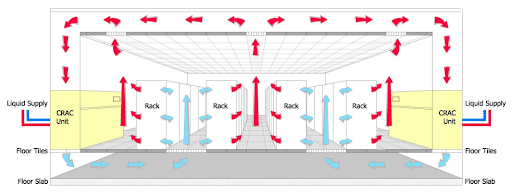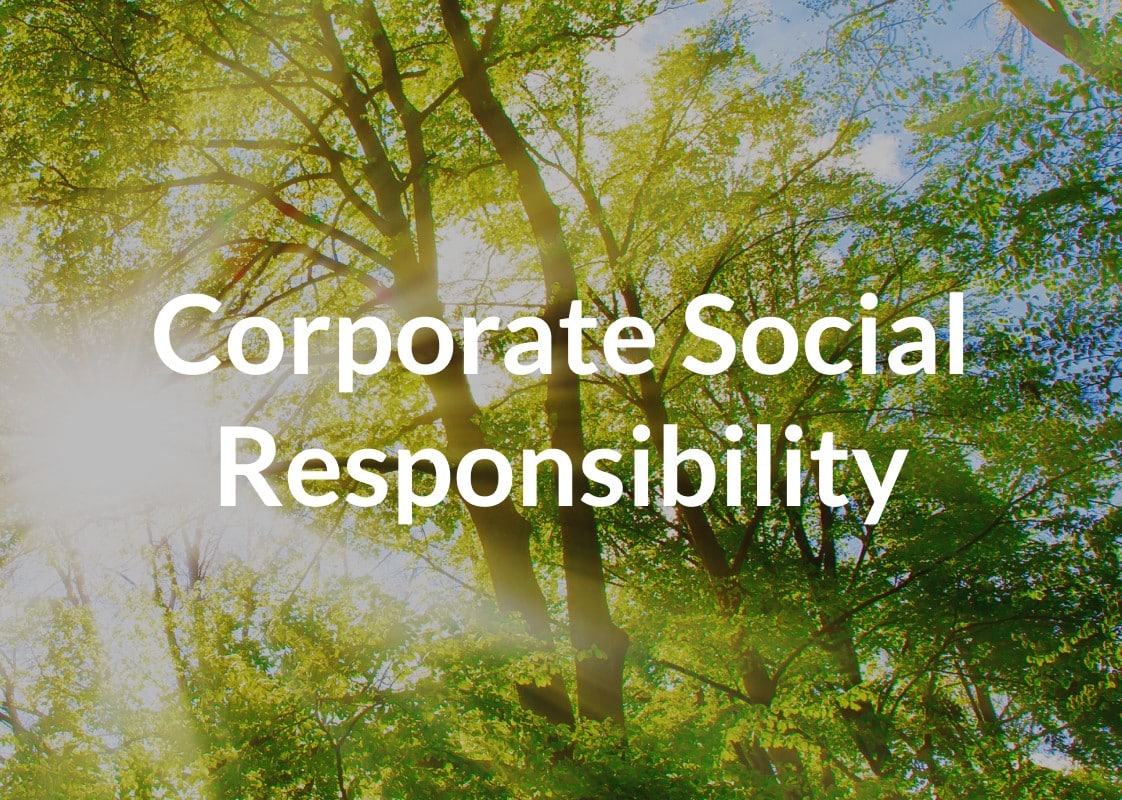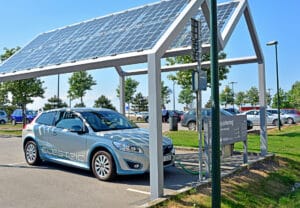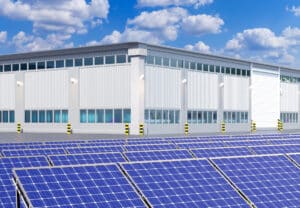
Did you know? The average carbon footprint of an individual in the United States is 16 TONS! More worrisome, that number needs to be reduced to under two tons by 2050 if we want to stave off a rise of 2°C in global temperatures as a part of the race to Net-Zero.
A lot of noise has been made about sustainability and carbon emissions ever since Greta Thunberg told the world’s leaders that they had failed in their responsibility to protect future generations.
Businesses and enterprises of all shapes, sizes and industries have begun to examine how to create a more sustainable and efficient business process. All of this begins and ends with their carbon footprint and the emissions released due to their operations at all levels.
Before diving into our favorite methods for reducing carbon emissions and stopping your carbon footprint, let’s first dive into exactly is a carbon footprint?
What is a Carbon Footprint?
A carbon footprint is the total amount of greenhouse gas (GHG) emissions generated by humankind, from individuals to multinational organizations and nations. Primarily carbon dioxide (CO₂) and methane (CH₄), these emissions are released into the atmosphere through specific human actions, both personal and industrial.
According to EPA data, large organizations and industrial sectors comprise over 22% of global greenhouse emissions.
This still leads to the question – where does this carbon footprint come from? You might be surprised by some of the answers.
How do organizations produce a carbon footprint?
Scope 1
Scope 1 emissions are emissions directly resultant from your organization’s activities and resources. These are a group of activities at the organization level mostly comprised of fuel use, and all fuels that emit GHG are within Scope 1.
Scope 2
Scope 2 emissions are indirectly generated from purchased energy via a utility provider. This level includes all GHG emissions produced from cooling, heating, steam, and electricity.
Scope 3
Scope 3 is where things get a bit complicated to track. At this level, emissions that are indirectly associated with but not created by the organization are included. That includes their entire supply chain, from buying business supplies through to the product lifecycle. This is where the majority of organizations’ GHG emissions can be found.
Now that we’ve broken down the scope of carbon emissions, let’s discuss some of the benefits of minimizing your carbon footprint?
What are the benefits of reducing your Carbon Footprint?
Besides having a minimal impact on the environment and contributing to preventing climate change, various benefits are achievable from lessening your carbon footprint. These include:
- Identifying energy inefficiencies or excessive energy use will lead to lower GHG emissions and operational costs (OPEX).
- Entering the carbon market (buying and selling offsets and allowances).
- Company internal and external transparency with processes and efforts improves brand image significantly.
- Sustainable business practices aren’t going anywhere, so creating and implementing a strategy for your business helps you get ahead of the curve.
- Attracting and retaining younger talent who are more aware and conscious of the environment and wasteful business practices.
- Give a boost to company-wide innovation and find potential solutions to problems from indirect sources.
We could list many more important reasons, but for now, let’s dive into what your organization can do to reduce your carbon emissions.
Top 10 tips to reduce your Carbon Footprint
As much as we would love to give up fossil fuels and go completely green with our business practices, unfortunately, we are a couple of decades off from achieving this. Simply put – we don’t have the global energy infrastructure to support the amount of power needed for large-scale enterprise operations.
However, there is a wealth of methods you can implement to reduce your GHG emissions, and here are some of our favorites:
1. Drop the plane ticket and put on a headset

It’s time to tear up (digitally) those plane, train, and bus tickets and switch to remote conferencing and e-events. The business world had to adapt in the last few years as global events rocked the global supply chain and day-to-day business as a whole.
With a bit of innovation, face-to-face events have transformed into digital expos and multinational e-conferences. However, as the world begins to reorient itself, business travel is back on the rise, with massive quantities of GHG emissions.
2. Flip that switch on renewable energy sources
One of the most direct ways to reduce carbon emissions is to switch to alternative, renewable energy sources like solar, wind, and tidal energy. Most of the emissions for enterprises and organizations derive from their energy use.
For telecom operators and other service providers, the most significant source of emissions of Scope 1 and Scope 2 comes from electricity. Economically speaking, this is represented by 4% of operators’ annual expenditure, though that number can be as high as 15%.
3. Swap those halogens for LEDs and keep your machinery efficient
For organizations with large campuses or widespread sites, a hefty electricity bill from lighting is a constant. You can take several steps to create wide-reaching and immediate improvements in your electricity needs and carbon emissions.
One step to take is to swap standard or halogen lights and bulbs with LED alternatives. Another step is to understand and maximize natural light in the building, then minimize the necessity for lighting fixtures in these areas. If you need to keep these lights, put them on timers for use only later in the day, to prevent wasting electricity.
4. Partner up and drive change
You don’t have to make these changes all on your own. Every day more and more enterprises across a wide array of industries are turning to sustainable, more efficient operating procedures. This trend gives your organization ample opportunity to create a joint effort or join a broader group effort with many enterprises.
5. Keep a wary eye and monitor your energy use and assets
Large organizations have a variety of buildings, sites, vehicles, and remote assets they have to manage and maintain constantly. Visibility for such a massive and wide-reaching network is challenging to achieve organically. That is why remote monitoring and management (RMM) solutions are perfect to monitor and manage your carbon and energy metrics.
RMM solutions like Galooli’s can help monitor your energy use, HVAC use, and car fleet behavior. Our solution offers overarching visibility, live alerts, and updates across a range of performance KPIs. These include fuel use, renewable energy use, and even the amount of carbon emissions your organization has saved while using our solution.
Implementing RMM tools can also help efficiently manage any potential malfunctions, limiting unnecessary maintenance, work hours, and vehicle travel. Through this holistic visibility, fossil fuel use will be reduced in favor of renewable energy like solar panels on-site.
6. Optimize those HVACs and data centers
Most large organizations and enterprises nowadays operate a data center for the storage and processing of information. Those processes generate a lot of heat, and often the rooms housing these servers and equipment are kept unnecessarily cool (around 19°C).

The optimum temperature for most data centers is around 23°C. For every 1°C increase in overall ambient temperature, organizations can reduce 8 to 9% of their energy costs. In addition, reorganizing your aisles to be staggered between hot and cool can save up to 40% in HVAC system energy use.
7. Repeat after me - Reduce, Reuse, Recycle
Not everything that glitters is gold, and buying new and fresh may not always be the best way to go. Electronic waste is growing explosively year over year, and often devices that could be easily refurbished are left on the wayside for the latest models.
The “Three Rs” also extends to your product packaging and sustainable operations. If there is no reusable alternative, start a program to offset that need, just like with carbon offsetting on a smaller scale.
8. Go digital!
Just imagine – in the US alone, 70% of the total waste produced in offices is paper. From junk mail to misprints, billing, presentations, handouts, business cards, and paper towels, the average office worker generates over 2 pounds of paper waste annually.
If we could rely on only recycled paper and create space for paper recycling, organizations could exponentially reduce that number. In addition, implementing digital billing, signing, and messaging can cut down significantly on paper waste.
9. Slick, Sleek, Sustainable Supply Chain
Another aspect of reducing your carbon footprint is sourcing your materials and focusing your business partnerships on organizations with like-minded sustainable goals. This starts with office supplies and extends to essential components and parties in your supply chain.
More care and thought need to be invested into considering the complete product lifecycle. Where are the building blocks coming from? How long is our product expected to last? What happens once it needs to be disposed of? These are the questions you need to start investing time and planning into.
10. Buy buy buy those carbon credits.
Just like barter and trade systems in times of yore, organizations can purchase carbon credits or “offsets.” In doing so, they are funding projects dedicated to reducing carbon emissions.
Buying carbon credits is also a great way to offset unavoidable travel needs by your organization. However, this method is also one of the more “last-ditch efforts” designed to make up for emissions you cannot avoid, either short or long-term.
Tackling your carbon footprints head on
As the world looks to reduce its impact on the natural world, organizations need to take a look at their own operations and how they can create sustainable practices. Though our list of tips is just the tip of the iceberg, depending on your industry, you can certainly implement most if not all of them and figure out which methods are most effective for you.
Connect With Us
operational cost savings & efficiency?



























